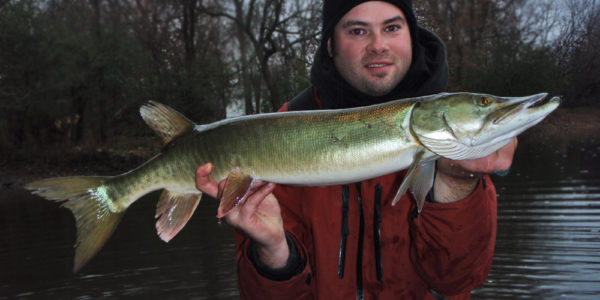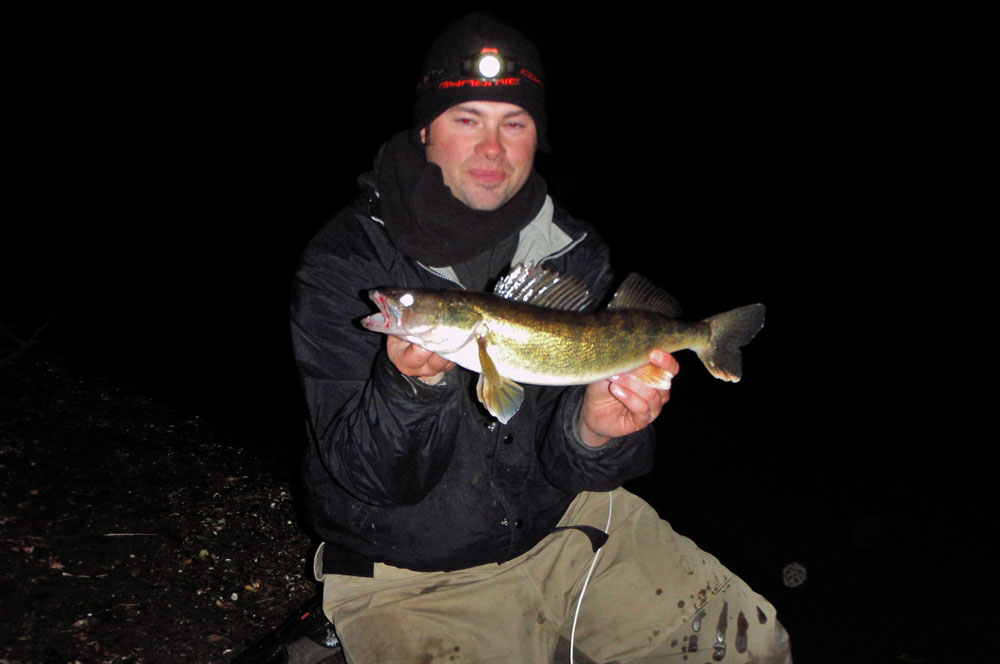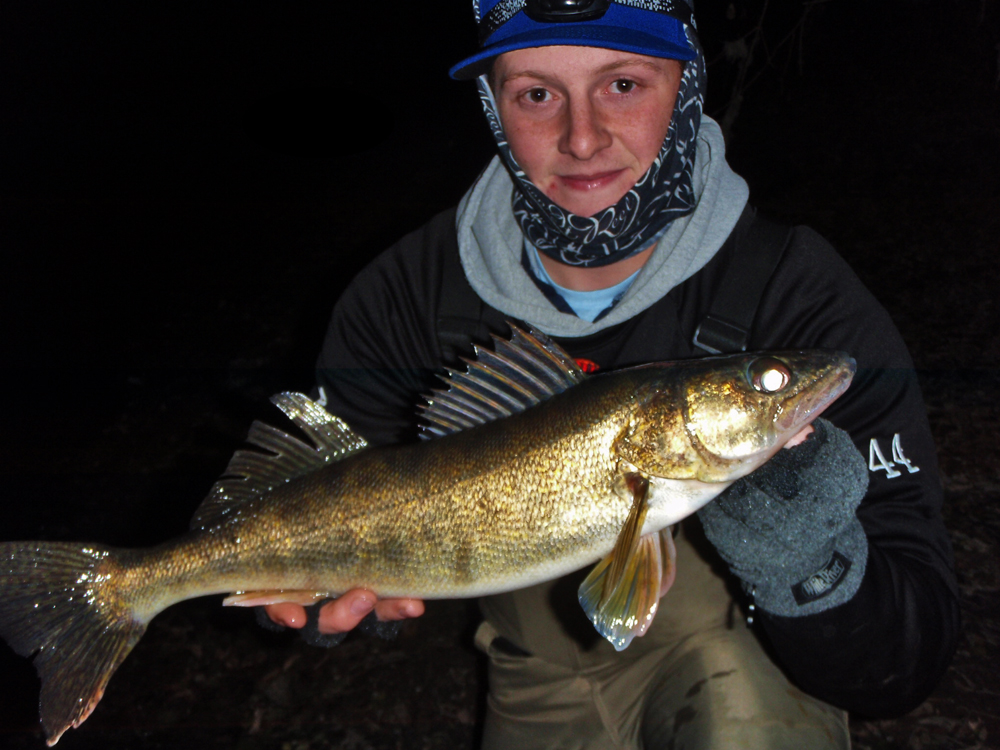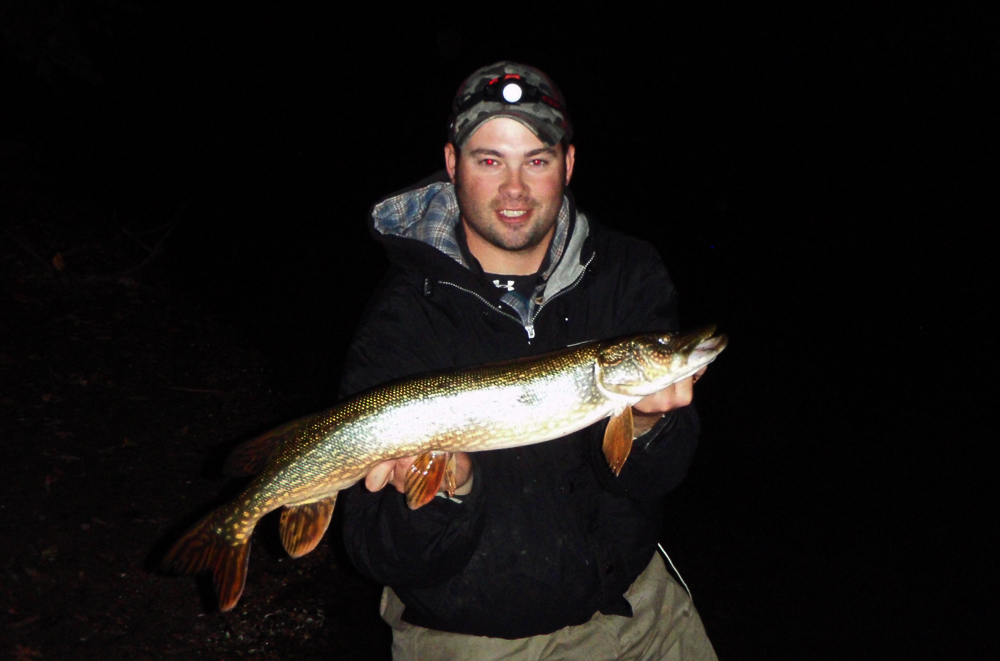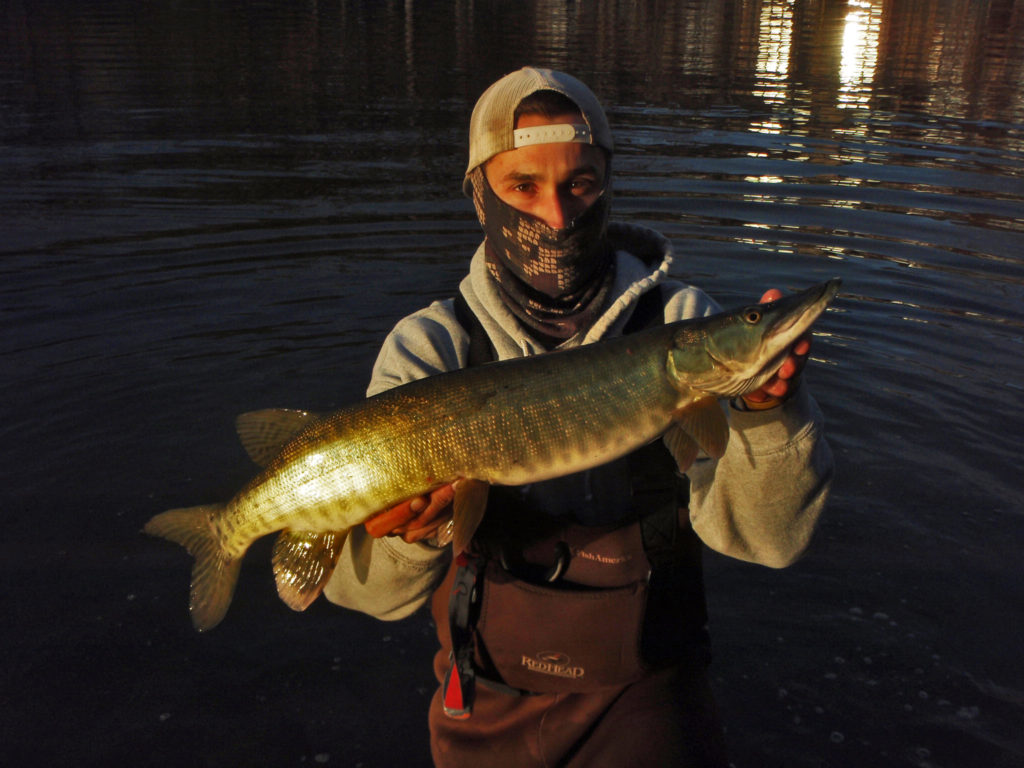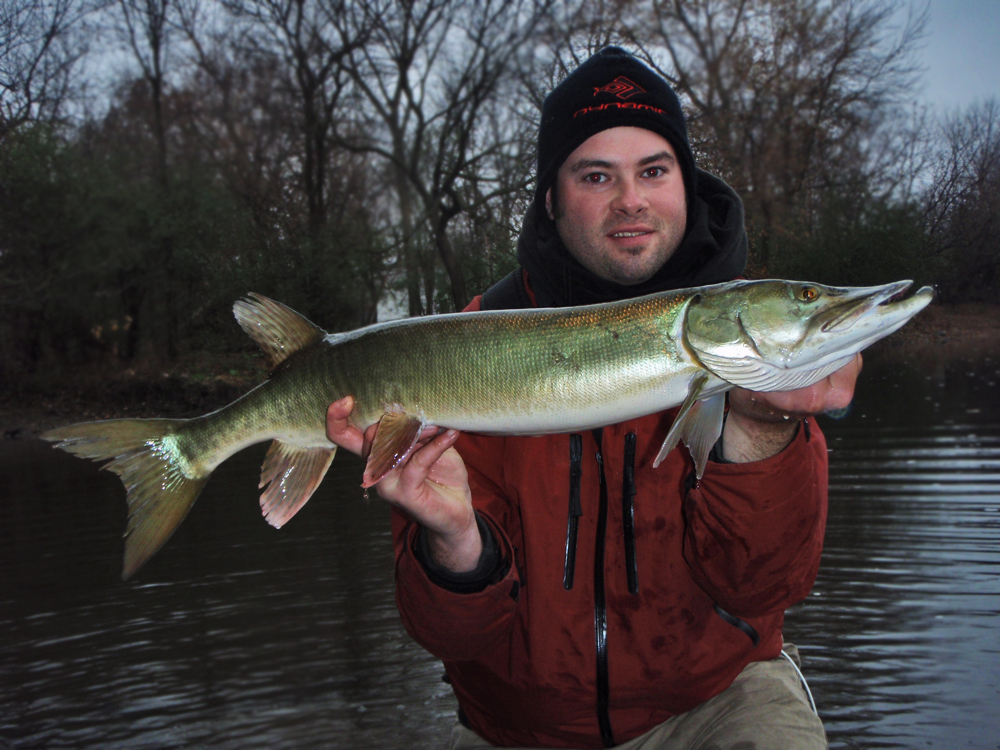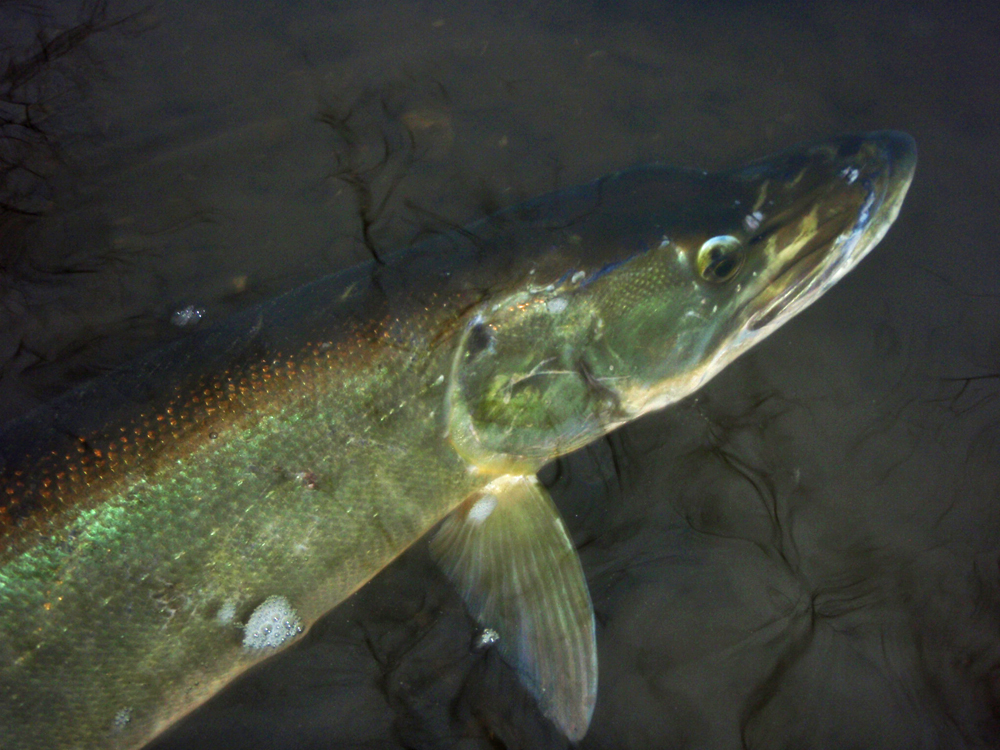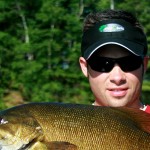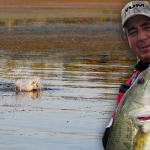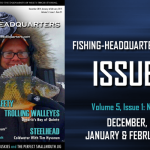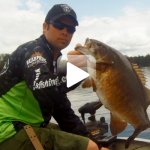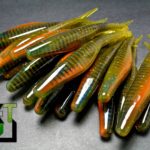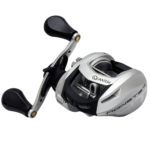By Andrew Ragas
I’m afraid to report that the end of 2016 open water fishing is nearing an end for me. It’s Sunday December 4th, and I’m currently getting dumped on by three or more inches of snow. When I’m back south in northern Illinois for the winter months, I tend to not bother with fishing unless it’s 40 degrees or above and I’m truly motivated. Sadly, the long-term forecast beginning this week appears to be 30’s and colder. I’m not motivated to push on.
I want to share some photos from my past few weeks of late fall wading the small streams of northern IL. I’ve really enjoyed catching gamefish from these small underrated urban fisheries throughout the month of November and early December. I’ve also enjoyed fishing with my new fishing friends, John and Alex too. They’ve proven to be skilled and knowledgeable, and are carbon-copies of me when I was younger and patrolling these small flows at their age, 10 years ago.
If I ever move away, and don’t have opportunities to fish here again in the future, I’ve gotta give the keys for the place away to someone.
Since my last report that was posted around November 15th, the fishing has remained about the same for friends and I. Adequate numbers of northern pike, walleyes, and elusive muskies have been caught and released. The only differences have been dramatically cooling air and water temperatures, slower retrieves, fishing more deep holes and slackwater pools, and frozen rod guides.
The two walleyes above were caught a few days prior to Thanksgiving. The nighttime walleye game seems to be over now, with water temperatures plunging into the 38-39 degree range. Most of them have now migrated into their deep [mostly inaccessible] wintering holes. On some mild days this winter, there’s always a chance they’ll reappear again to feed in the same areas we were catching them.
John highlighted the end of year walleye fishing with the quality 21 inch specimen above. The curved head and shoulder positively ID’s it’s a female. It’s a trick I’ve learned to differentiate between male and female walleyes.

Thanks largely in part to their infestation in our watershed, northern pike are always consistent and for the most part pretty stupid. They’re hungriest and voracious, and easy to catch. With our new musky fishery currently establishing and growing, a number of pike from 20 to 30 inches were caught by accident with downsized musky snacks.
And speaking of muskies……..
About half of my annual musky fishing is spent floating rivers by boat and wading them. Modestly enjoying this local musky fishery in northern Illinois almost feels like I never left the northwoods in October.
Muskies live in small rivers and streams across the entirety of their home range. Most are native fisheries, while others are stocked and artificial like ours. John, Alex and I have done our homework in order to determine how muskies exist in our little river, estimated their numbers and range, and located their predictable areas.
Two main factors that dictate river musky location and migration during this time of year is forage location and muskie movement towards wintering areas.
In order to catch the few fish we have, we walk as much water as we can to encounter the most muskies. On some days, we’ll encounter 1 fish or more. While most days, we still encounter none. If the shoreline is not too steep or wooded, we try fishing from shore to avoid spooking fish, and we still wear waders. If we must be in the river, we stay as far as we can from the structure and water being targeted. Walking upstream is best to avoid washing mud and debris into water that hasn’t been fished yet.
Slow presentations, like the Shallow Manta in natural sucker pattern I haven’t taken off my line in over two weeks, has worked best for me. But small gliders and 6 inch jerkbaits with frequent pauses have worked best in our cold water. We experiment with speed and let the muskies tell us what they want, and give each hole up to 30 minutes of our time. If fish aren’t there, or no feedback, we move on to the next.
We concentrate on deep slow holes even if they are few and far between. When we find one, we work it meticulously and thoroughly, throwing at least a few different lures (sizes and styles) and even drifting live creek chubs we purposely catch as bait on quick strike rigs as a last resort. Ultra slow presentations are required. When working a deeper hole, we fish it through first with a shallow presentation then scour the depths out with a deep-diving crankbait, tube, or swimbait to thoroughly fish all the water. In our small river, a 4 foot hole is considered deep.
River Run Tackle manufactures the Shallow Manta that I love fishing with on these small streams. It has great hang time in the strike zone, giving muskies a chance to see it and hopefully strike. It glides side to side and is one of the few lures I have that slips perpendicular to the current and enables me to work parallel to the bank when forced to cast perpendicularly by overhanging tree branches.
Wintering muskies is a uniquely challenging game, and that’s the scenario we are now facing.
Water in a winter river can get very cold, 39 degrees and colder. Wintering areas in rivers are larger deep slow spots were muskies rest and sometimes forage during the cold water months. In smaller slow gradient rivers like ours, suitable wintering areas can be few and far between. Muskies will concentrate heavily in these holes and competition for forage can become fierce. Often the best wintering holes are small reservoirs and stagnant pools above dams, and even warm water discharges too. Areas that attract muskies in the winter will usually also attract forage and a number of other species also!
Hopefully a few mild 40 degree days throughout the upcoming winter months will allow for continued fishing opportunities.
Muskies thrive in many river and stream environments. Good water quality is preferred, but anglers like ourselves are discovering that muskies will live and grow surprisingly well in less than ideal water quality and habitats too. I believe Illinois fisheries biologists have now taken note of this, and could consider stocking fish into other waterbodies to create new angling opportunities. Natural reproduction is another can of worms, as reproductive assistance is often needed to maintain these populations. ALL musky streams are exceptionally fragile fisheries. Here in northern IL, muskies don’t reproduce anywhere for the matter, and in any of our rivers.
There’s something to be said about catching muskies from small rivers, especially formerly abused waterways like ours that no way in hell should have ever supported these fish but now does.


